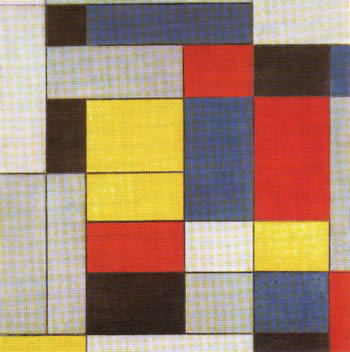 Composition with Grey, Red, Yellow and Blue (1926).
Composition with Grey, Red, Yellow and Blue (1926).
He tried extending the planes to the edge of the canvas, giving the illusion of stretching into infinity, while the grid was stunted supposedly showing that it is free of the colour planes, and exists in the middle of the endless colour field. Mondrian produced many dramatic illusions within this year of creativity with colour planes seemingly stretching up off the canvas and then being dragged back down by offset colours at the base of the painting. A deeper architectural style is revealed in his work suggesting a solidity of structure. As he progressed further with his paintings, he could no longer be as random in distributing his colours as they are in nature. He had to control them and it became increasingly difficult for him to paint his pictures. He resorted to constant over-painting in search of a solution.
Mondrian became so engrossed with finding his solutions, and fascinated with his paintings and form, that he withdrew from the social scene to concentrate on his art. In doing this he turned his own life into a myth and became highly selective in what he disclosed to others about himself. He destroyed many of his letters and documents from earlier years and changed his furnishing to banish memories from his youth of bad times. He basically was reinventing himself, re-writing his life as he went along wanting to leave only a reminder of a life “…dedicated to pure form” (pg 64).
After 1921, his paintings grew to feature more and more white space with patches of colour creating more sublime creations.